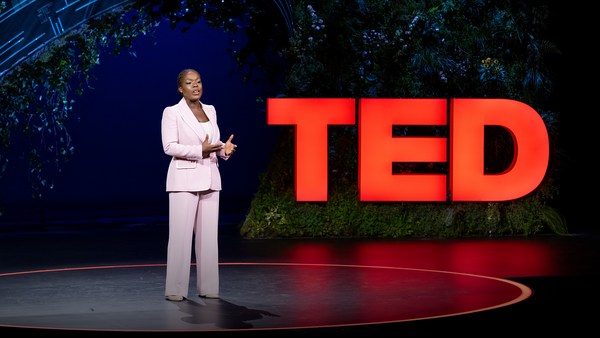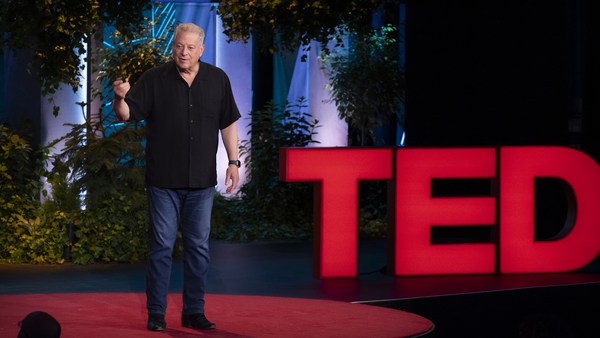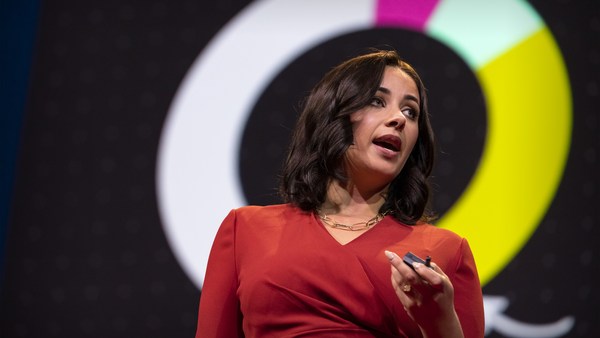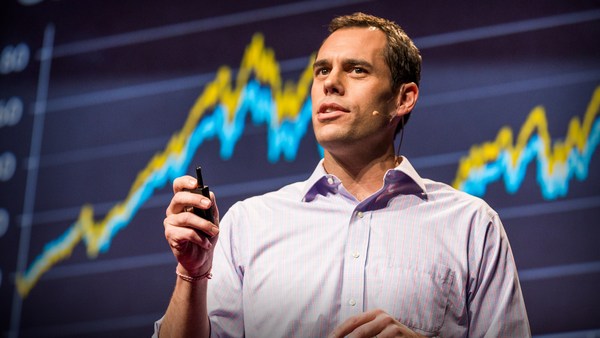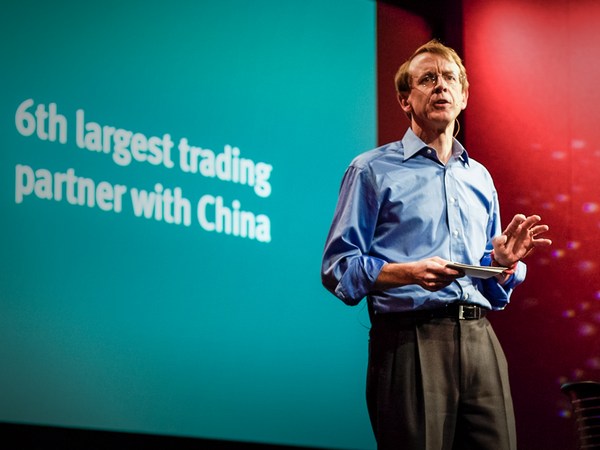Nili Gilbert: The reality is that while financial capital has been moving towards addressing the climate transition, it’s not moving fast enough, and it’s not moving at the scale that we need. So it's really great to be here with you today to talk about why we think that's happening, what we think some of the challenges are and how to address it. So what are you seeing?
David Blood: Well, maybe we'll start with a little bit of background. The United Nations estimates that we will need something in the order of three to four trillion dollars per year to globally decarbonize our economy through 2050. This shift -- and I know you’ve talked about this as well -- will be the most significant shift in economic history. We think it will be more extensive than the industrial revolution and probably faster than the digital revolution. And the good news is we are seeing funds flowing to climate solutions. The different news is that, as you said, it's not nearly enough. It's not going to the hard-to-abate sectors. And importantly, it is not going to the Global South. In fact, we think that we will likely miss every single one of the 17 Sustainable Development Goals.
We’ve been at this problem for almost 20 years, and we've seen enormous incremental change. But we need now transformational change in our economies, in our businesses and our financial institutions.
NG: Why has this been so hard?
DB: Well, it's a good question, and it's complicated for one thing. But I think there's probably four fundamental points. The first is the finance sector is critical, but it does rely on businesses and entrepreneurs to lead the way. We are financing their ideas and their businesses. Secondly, we do need change in public policy and change in regulation. Thirdly, with the investment community, we don't yet have the tools to truly evaluate whether a company or an industry is decarbonizing. We're making progress, but there's still work that we need to do. And lastly, we need to fundamentally change the way people think about capital allocation. And by that, we mean we need to create the capabilities for investors to understand the impact of their investments within a traditional risk and return framework.
NG: All of this sounds really challenging. Is there any good news?
DB: There is. And we're both optimists.
NG: That's right. DB: That's a good thing.
A good place to be. First of all, there’s no question there’s enough capital. There's something in the order of 150 trillion dollars of institutions who've committed to net zero. Now, we know that that's an overstatement, but the point is 150 trillion, 100 trillion, that's a lot of money. We have the money to make the transition.
Secondly, there are no legal barriers -- we'll come back to this in a little bit -- for investors to allocate capital to sustainable solutions.
Thirdly -- and we're seeing it yesterday, we're seeing it today -- there are amazing entrepreneurs, amazing business people, and the technology cost downcurves are happening even as we speak. And as Al [Gore] mentioned yesterday, public policy is also on the move. We have seen the Inflation Reduction Act. It is the most significant climate legislation in the United States and indeed probably the world. And the Europeans are responding aggressively to decarbonize their economy because of the tragic war in Ukraine.
And lastly, as we both know, finance can change. When my dad was a portfolio manager at Ford Motor Company in the late 60s, early 70s, the way he made investments was based upon limiting risk. That was their job. But then as time went on, people began to realize that if you could be paid for risk, perhaps that would be a better way to deploy capital. And so whole industries developed, like the venture capital industry, like the growth equity industry and, of course, the high-yield marketplace. So finance can change, and that's going to be a very important part of the of the solution.
Now we've been talking about sort of the macro picture. You're working on the ground. What are you seeing?
NG: Well, you know, one of the reasons that I think that the finance pathway towards net zero is so challenging is because it touches every other pathway, because finance encompasses the whole global economy. And so the finance transition means supporting the transitions of individual sectors of every country and always paying attention to the needs of individual communities as we get this done. But while we're doing and supporting this work on the ground, our pathway still has to add back up to a Paris-aligned pathway at the end of the day. And so bringing together this top-down and bottom-up effort is extremely challenging.
But I think that the energy sector itself, which as you know, is in many ways the other key sector for driving the transition, provides a really good example of this framework in practice. So the International Energy Agency, the IEA, has told us that, as of last year, finance for clean energy is actually equal with finance for fossil fuels, which sounds like good news, right? But the challenge is that by 2030, we actually need finance for clean energy to reach four times what's going into traditional fossil fuels. So we need massive scale, massive change in a short amount of time, and we need even more than that to go into financing transitions for individual sectors on the ground, for breaking down the demand for fossil fuels as a way ultimately to break down the supply.
So when you think about these three buckets, limiting finance for fossil fuels, scaling up finance for clean energy and then investing to end the demand for fossil fuels, I actually think that one of the greatest untapped -- it’s being tapped, but one of the greatest forward-looking opportunities is actually in that third bucket, where we break down the demand. And when we think about that bucket, one of the places where we need to act much more quickly is in focusing on hard-to-abate sectors. These are the most energy-intensive sectors that won't be able to run on solar and wind. Things like cement, steel, aviation, shipping, which actually make up almost a third of global emissions in total. So we really need to work to address these. But the good news is that we actually have a lot of the solutions to be able to get these sectors to their goals. And thanks to policy, thanks to rising demand for these solutions, bringing down their costs, and thanks to technological improvements, we now see that the cost for the clean solutions is approaching, or in some cases is even lower than, the costs for the high-emitting alternatives. So what finance needs to do is partner with science, continue to engage with policy and work with engineers to be able to bring these solutions online at scale.
DB: Well, we agree with you about the hard-to-abate sectors. Do you have any favorite ones to talk about?
(Laughter)
NG: Well, I can't play favorites.
DB: But if you were ...
NG: But one sector that I'm really excited about right now is aviation, because sustainable aviation looks ready to scale. One of the things that we're seeing is that there's a rising amount of corporate demand to buy sustainable aviation fuel, which is the key unlock for decarbonizing this sector. But what we're also seeing is that the supply of sustainable aviation fuel is not nearly enough to meet that demand or to meet the goals for the sector, even for 2030. Forget about 2040 or 2050. And so what we need to do to make a difference here is focus on multiple production pathways for sustainable aviation fuel. Today, most of the fuel is being produced using biofuels, which just isn't fit to scale. So what we need to do is look at pathways which exist. Like we can make this fuel out of ethanol, we can make it out of carbon, even carbon dioxide that's been captured from the atmosphere. We can make this stuff out of municipal solid waste, not to be trashy.
(Laughter)
And so the example of aviation shows a map for how finance needs to partner with individual sectors to get this done. Yes, we need to invest with airlines and give them long-term capital to achieve their goals. But also separately, we need to invest in the solutions that they need to reach those goals. And I think that the aviation sector also paints a picture of where we need to go in this transition as a whole, why it’s hard and why I’m optimistic. Because the truth is that there is a lot that we're going to have to let go in this transition, and that's challenging. We need to do it in a just way. But the other truth is that there's also so much that we get to create. We need to let go of jet fuel, but we also get to invest in all of these sustainable fuels. So what I see is a massive multigenerational opportunity for growth, sustainable growth. Just imagine creating a transition that is greater in scale than the industrial revolution to be delivered in less than 30 years. It's an unprecedented opportunity for impact.
So I'm excited. I don't know, David. Do you think that we can do this?
DB: Well, we both are optimists. And I think we both have said it's going to be difficult, but we can do it. We need transformational change in our industries, in our financial institutions, in civil society and certainly in public policy. But we have to remember and understand, and we're seeing it very vividly now, the impacts of climate change are with us now and will get more accelerated over the course of the next couple of years. Al [Gore] and I published an op-ed in the “Wall Street Journal” in November of last year talking about fiduciary duty. And let us be very clear: investors who do not consider climate are running significant risks in their portfolios and are not fulfilling their fiduciary duty.
(Applause)
A pensioner living in a 5.5-degree Fahrenheit -- as opposed Celsius -- 5.5-degree Fahrenheit world with degraded biosystems and rampant inequality will not enjoy the fruits of their retirement.
Now we know finance can change. It's not static. We believe very strongly that the role of finance is to provide the means for society to achieve its ambitions. And the good news is climate-led investing is happening. It is becoming an asset class. And so by creating situations where capital markets can expand what they value, to take account of sustainability impacts, will allow us as investors to, in fact, provide the means for society to achieve its objectives on the planet, on people and on nature.
NG: Sounds good. I say let's go out there and do it. Thank you, David.
Thank you.
(Applause)
